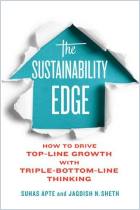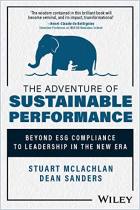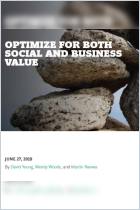Business leaders have known for decades that there was a need to tackle environmental and social issues, yet most failed to take action. According to sustainability transformation consultant Peter McAteer, today’s leaders can’t afford to mirror that inaction. McAteer explains why all businesses, regardless of size, must start taking accountability for their contributions to problems such as unsustainable consumption patterns, social inequality, and environmental degradation. McAteer offers applicable insights to help leaders transform organizational practices and become sustainability champions.
Leaders must step up as change agents and connect sustainability to value creation.
The world is facing the collapse of ecosystems and human infrastructure as a result of global warming and extreme weather events. At the same time, social challenges such as global poverty and the ubiquity of child labor persist despite the potential for solutions. Leaders must start taking accountability and engaging in self-reflection about how they may be contributing to these and other social and environmental issues. Business leaders can — and must — act as change agents to help humanity achieve global sustainability targets.
Many business leaders see sustainability as a liability rather than as an advantage that can help their business succeed. To shift their companies’ practices, leaders must address this fallacy. Case studies of how other companies have benefited from embracing sustainability can help change minds. For example, in 2010, the UK conglomerate Unilever’s new CEO, Paul Polman, instituted a plan to shift the company toward sustainable, environmentally friendly practices and values. By 2016, Unilever reported that its Sustainable Living brands were...
Peter McAteer is the managing director of SustainLearning LLC, a firm that provides training to help organizations reach sustainability and well-being goals. He’s the author of books such as Pathways to Action: How Keystone Organizations Can Lead the Fight for Climate Change.




















Comment on this summary